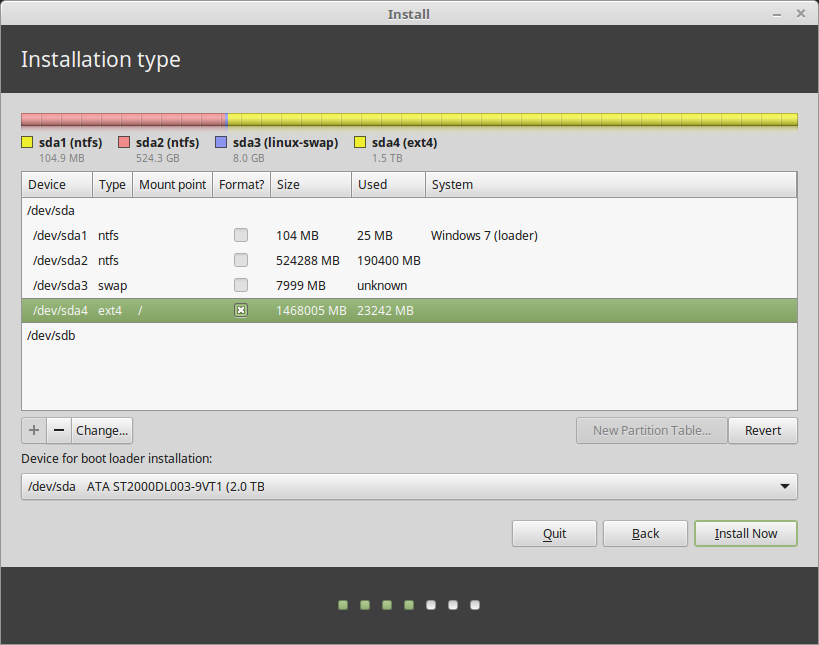

- #UNIVERSAL USB INSTALLER REQUESTED PARTITION NOTFOUND HOW TO#
- #UNIVERSAL USB INSTALLER REQUESTED PARTITION NOTFOUND INSTALL#
- #UNIVERSAL USB INSTALLER REQUESTED PARTITION NOTFOUND UPDATE#
- #UNIVERSAL USB INSTALLER REQUESTED PARTITION NOTFOUND WINDOWS 10#
- #UNIVERSAL USB INSTALLER REQUESTED PARTITION NOTFOUND PRO#
I cannot boot to Windows nor install Ubuntu since the partitions aren't detected. Partition 4 does not start on physical sector boundary.ĭisk /dev/sdb: 3.8 GiB, 4051697664 bytes, 7913472 sectors I/O size (minimum/optimal): 4096 bytes / 4096 bytesĭevice Boot Start End Sectors Size Id Type Sector size (logical/physical): 512 bytes / 4096 bytes Sector size (logical/physical): 512 bytes / 512 bytes Welcome to GNU Parted! Type 'help' to view a list of sudo fdisk -lĭisk /dev/loop0: 1.5 GiB, 1553670144 bytes, 3034512 sectors Here is the output of sudo parted /dev/sda print and sudo gdisk -l /dev/sda sudo parted /dev/sda gh-98692: Fix the Python Launcher for Windows ignoring unrecognized shebang.
#UNIVERSAL USB INSTALLER REQUESTED PARTITION NOTFOUND UPDATE#
Of course, you’d just use FAT32 instead of ISO/UDF on a hard disk (and typically on thumb drives, too). gh-98745: Update py.exe launcher to install 3.11 by default and 3.12 on request. Most Live Images are bootable from just about any medium. harrymc at 10:50 1 That’s not true, harrymc. I made a bootable USB drive for Ubuntu installation using "Universal USB Installer". You will need to install Linux to such a disk. Only the installer is not able to detect the partitions. But the partition manager "Gparted" is showing all the existing partitions correctly. I'm afraid if I continue to install I might break the existing partitions and lose my files. The installer shows an empty hard disk (no partitions) where I can install Ubuntu. The problem is, Ubuntu installer is neither detecting the windows installation nor the partitions I've made on my hard disk using windows.
#UNIVERSAL USB INSTALLER REQUESTED PARTITION NOTFOUND WINDOWS 10#
Way to many problems with crap tech that doesn’t work!!! Going back to late 99′ where media burning and booting works every god damn time while in 2020 USB boot-able media creation tool does not work !!!įor all of u with the same/similar problems just throw out USB stick’s out of window ! If developers are not capable once and for all to solve god damn boot from USB to work as a classic CD/DVD boot methods that works just about 100% every time, then they should go pack the bags and vanish from net not posting any NERVE eating tools any more ! These tools concepts are not also nerve eating but also TIME consuming with 100% non usable result.I deleted the Ubuntu 64bit partition from Windows 10 to extend its size and I am trying to reinstall it on my PC. ISO file image when it is modified but boot when it is burned from optics drive, but boot not in none of the case with various boot USB tools trying to make, is ISO file image for that purpose completely obsolete for that purpose. Why not provide USB img file that is bootable within file itself trough some tool that simply makes usb stick bootable within few clicks ! I thought this tool does make USB boot stick in user save nerve mode ! You can check the downloaded file with VirusTotal. Some are using the Virus definitions of other programs. The results of the famous anti-virus program should be more trust. Use this tool at your own risk.Īny antivirus program that blocks AIO Boot software is a false positive. This means that their analysis is confused.
#UNIVERSAL USB INSTALLER REQUESTED PARTITION NOTFOUND HOW TO#
#UNIVERSAL USB INSTALLER REQUESTED PARTITION NOTFOUND PRO#
SanDisk Extreme PRO USB 3.1 Solid State Flash Drive is good to use.If you want to share the link to download AIO Boot, please share this page, or use the Google Drive link, it is always the latest version.Here is the output of sudo parted /dev/sda print and sudo gdisk -l /dev/sda. I made a bootable USB drive for Ubuntu installation using 'Universal USB Installer'. If this version has problems, please try the older versions and let me know this. But the partition manager 'Gparted' is showing all the existing partitions correctly.Please check the links with the latest version as above. Maybe one of the links above is updating slowly.If you install AIO Boot on a partition on the same disk as the Windows partition, if you later want to uninstall it, do not delete the AIO and EFI folders.


 0 kommentar(er)
0 kommentar(er)
